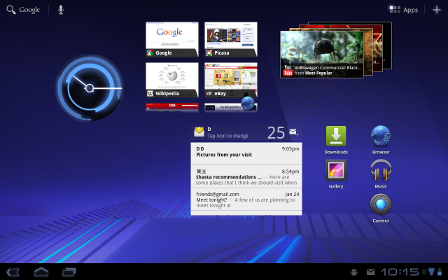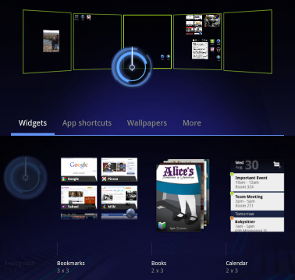Its a must read letter from the editor of Times of India to our honorable Prime Minister pertaining to the corruption and cozenage rooted deep inside the country. A very audacious and powerful letter....
LETTER OF THE EDITOR OF "THE TIMES OF INDIA " TO THE PRIME MINISTER OF INDIA
Dear Mr. Prime minister,
I am a typical mouse from Mumbai. In the local train compartment which has capacity of 100 persons, I travel with 500 more mice. Mouse at least squeaks, but we don't even do that.
Today I heard your speech, in which you said, 'NO BODY WOULD BE SPARED'. I would like to remind you that fourteen years have passed since serial bomb blasts in Mumbai took place. Dawood was the main conspirator. Till today he is not caught. All our Bollywood actors, our builders, our Gutka king keep meeting him, but your Government can not catch him. Reason is simple; all your ministers are hand in glove with him. If any attempt is made to catch him, everybody will be exposed. Your statement 'NOBODY WOULD BE SPARED' is nothing but a cruel joke on these unfortunate people of India.
Enough is enough. As such, after seeing terrorist attack carried out by about a dozen young boys, I realize that if same thing continues, days are not far away when terrorists will attack by air, destroy our nuclear reactors and there will be one more Hiroshima.
We the people are left with only one mantra. Womb to Bomb to Tomb. You promised Mumbaikar Shanghai; what you have given us is Jalianwala Baug. Today only your home minister resigned. What took you so long to kick out this joker? Only reason was that he was loyal to Gandhi family. Loyalty to Gandhi family is more important than blood of innocent people, isn't it?
I am a typical mouse from Mumbai. In the local train compartment which has capacity of 100 persons, I travel with 500 more mice. Mouse at least squeaks, but we don't even do that.
Today I heard your speech, in which you said, 'NO BODY WOULD BE SPARED'. I would like to remind you that fourteen years have passed since serial bomb blasts in Mumbai took place. Dawood was the main conspirator. Till today he is not caught. All our Bollywood actors, our builders, our Gutka king keep meeting him, but your Government can not catch him. Reason is simple; all your ministers are hand in glove with him. If any attempt is made to catch him, everybody will be exposed. Your statement 'NOBODY WOULD BE SPARED' is nothing but a cruel joke on these unfortunate people of India.
Enough is enough. As such, after seeing terrorist attack carried out by about a dozen young boys, I realize that if same thing continues, days are not far away when terrorists will attack by air, destroy our nuclear reactors and there will be one more Hiroshima.
We the people are left with only one mantra. Womb to Bomb to Tomb. You promised Mumbaikar Shanghai; what you have given us is Jalianwala Baug. Today only your home minister resigned. What took you so long to kick out this joker? Only reason was that he was loyal to Gandhi family. Loyalty to Gandhi family is more important than blood of innocent people, isn't it?
I am born and brought up in Mumbai for last fifty eight years. Believe me, corruption in Maharashtra is worse than that in Bihar. Look at all the politicians, Sharad Pawar, Chagan Bhujbal, Narayan Rane, Bal Thackray , Gopinath Munde, Raj Thackray, Vilasrao Deshmukh all are rolling in money. Vilasrao Deshmukh is one of the worst Chief ministers I have seen. His only business is to increase the FSI every other day, make money and send it to Delhi , so Congress can fight next election. Now the clown has found new way and will increase FSI for fishermen, so they can build concrete houses right on sea shore.
Next time terrorists can comfortably live in those houses, enjoy the beauty of the sea and then attack our Mumbai at their will.
Recently, I had to purchase a house in Mumbai. I met about two dozen builders. Everybody wanted about 30% in black. A common person like me knows this and with all your intelligence agency & CBI, you and your finance ministers are not aware of it. Where all the black money goes?
To the underworld, isn't it? Our politicians take help of these goondas to vacate people by force. I myself was victim of it. If you have time please come to me, I will tell you everything.
If this has been a land of fools, idiots, then I would not have ever cared to write to you this letter. Just see the tragedy. On one side we are reaching moon, people are so intelligent; and on the other side, you politicians have converted nectar into deadly poison.I am everything - Hindu, Muslim, Christian, Scheduled Caste, OBC, Muslim OBC, Christian Scheduled Caste, and Creamy Scheduled Caste; only what I am not is INDIAN. You politicians have raped every part of Mother India by your policy of divide and rule.
Take example of our Former President Abdul Kalam. Such an intelligent person; such a fine human being. But you politician didn't even spare him and instead choose a worthless lady who had corruption charges and insignificant local polititian of Jalgaon WHO'S NAME ENTIRE COUNTRY HAD NOT HEARD BEFORE. Its simple logic your party just wanted a rubber stamp in the name of president. Imagine SHE IS SUPREME COMMANDER OF INDIA 'S THREE DEFENCE FORCES. What morale you will expect from our defence forces? Your party along with opposition joined hands, because politicians feel they are supreme and there is no place for a good person.
Dear Mr Prime minister, you are one of the most intelligent person, a most learned person. Just wake up, be a real SARDAR. First and foremost, expose all selfish politicians. Ask Swiss banks to give names of all Indian account holders. Give reins of CBI to independent agency. Let them find wolves among us. There will be political upheaval, but that will be better than dance of death which we are witnessing every day. Just give us ambience where we can work honestly and without fear. Let there be rule of law. Everything else will be taken care of.
Choice is yours Mr. Prime Minister. Do you want to be lead by one person, or you want to lead the nation of 100 Crore people?
Prakash B. Bajaj
Editor Mumbai-Times of India














